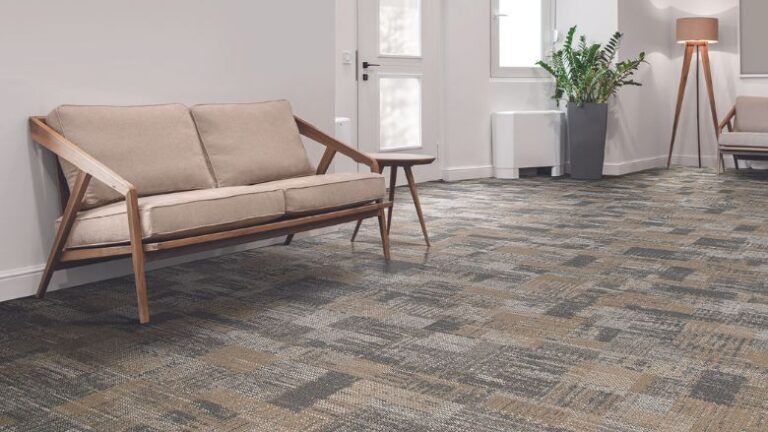Does Hydrogen Peroxide Damage Carpet? Learn How to Use It Safely
Hydrogen peroxide is a versatile and commonly used cleaning agent, often praised for its ability to tackle tough stains. However, when it comes to carpet cleaning, one key question arises: does hydrogen peroxide damage carpet? Whether you’re dealing with stubborn stains or simply looking for a cleaner home, understanding how hydrogen peroxide interacts with different carpet fibers and the potential risks is essential.
While hydrogen peroxide is an excellent tool for stain removal, it does come with potential drawbacks. Its bleaching properties mean it can cause discoloration and damage to some carpet types if not used correctly. This article will guide you through the factors that influence whether hydrogen peroxide will harm your carpet, explain how to use it safely, and offer tips for carpet maintenance.
Understanding Hydrogen Peroxide’s Cleaning Properties
Hydrogen peroxide is a chemical compound with strong oxidizing and bleaching properties. It’s a common household product, often used as a disinfectant, bleach, and stain remover. The compound works by breaking down stains, such as those from blood, wine, or coffee, into smaller particles, making them easier to remove.
When used in low concentrations (around 3%), hydrogen peroxide can be very effective at removing stains and disinfecting carpets without causing significant damage. However, when used improperly or on the wrong carpet types, hydrogen peroxide can also cause discoloration or weaken the fibers.
It’s important to understand that hydrogen peroxide’s ability to bleach is the main reason it could damage your carpet. This means that, while it’s an effective tool for some types of stains, it may not be suitable for every situation.
Does Hydrogen Peroxide Damage Carpet? The Risks Explained
The key question many homeowners ask is whether hydrogen peroxide will damage carpet. The answer is, unfortunately, not straightforward, as the risk depends on various factors, such as the carpet material, concentration, and how it’s applied.
Hydrogen peroxide may damage your carpet if it causes discoloration, particularly on colored carpets. This is because the chemical breaks down the dyes in the fabric, leading to lighter patches or spots. The damage is more pronounced when hydrogen peroxide is used in high concentrations (above 3%) or if it’s left on the carpet for too long.
Can Hydrogen Peroxide Bleach Carpet?
Yes, hydrogen peroxide can bleach carpets, particularly those with dark colors. While it’s effective for stain removal, it may cause the carpet to lose its color if not carefully monitored. The bleaching process happens because hydrogen peroxide acts as an oxidizing agent that breaks down the colorant or dye in the carpet fibers.
If you notice lighter spots where hydrogen peroxide was applied, it indicates that the chemical has interacted with the carpet’s dye, causing a bleaching effect. To avoid this, it’s important to always test the solution on a small, hidden section of the carpet before applying it to larger areas.
Carpet Types and Hydrogen Peroxide: Is It Safe?
Different types of carpets react differently to hydrogen peroxide. Whether or not hydrogen peroxide will damage your carpet largely depends on the material. Let’s take a closer look at how it affects different types of carpets:
Synthetic Carpets (Nylon, Polyester, Olefin)
Synthetic carpets are generally more resistant to the bleaching effects of hydrogen peroxide. Materials like nylon, polyester, and olefin are durable and less likely to suffer from discoloration when exposed to hydrogen peroxide, especially if it’s diluted to a 3% solution. These carpets can handle hydrogen peroxide’s cleaning power well, which is why it is often used as a go-to solution for stain removal.
Natural Fiber Carpets (Wool, Cotton)
For natural fiber carpets, such as wool and cotton, hydrogen peroxide should be used with caution. These materials are more delicate and prone to damage from the harsh bleaching action of hydrogen peroxide. Using hydrogen peroxide on wool, for instance, can lead to severe damage such as fiber weakening and bleaching of the fabric. It’s best to avoid using hydrogen peroxide on these materials unless absolutely necessary.
How Hydrogen Peroxide Affects Carpet Color
One of the primary concerns with using hydrogen peroxide on carpets is its ability to affect the color. Hydrogen peroxide is often used to lighten stains, but this can result in bleaching or discoloration of the carpet fibers.
What Happens if Hydrogen Peroxide Bleaches Your Carpet?
If hydrogen peroxide bleaches your carpet, you’ll notice lightened or white spots where the solution was applied. This is especially noticeable on darker carpets or carpets with vibrant colors. While the stain may be gone, the loss of color can leave the carpet looking patchy and uneven.
In some cases, this may be irreversible. To prevent this, it’s crucial to use hydrogen peroxide carefully, test it on a hidden area, and avoid leaving it on the carpet for an extended period.
Safe and Effective Ways to Use Hydrogen Peroxide on Carpets
If you’re determined to use hydrogen peroxide for carpet cleaning, it’s essential to follow proper steps to minimize the risk of damage. Here’s how to use it safely:
Correct Concentration and Dilution
The key to using hydrogen peroxide safely on carpets is proper dilution. A 3% concentration is typically recommended for cleaning carpets. Anything stronger can result in damage, particularly for delicate or darker carpets. Diluting hydrogen peroxide with water helps reduce its bleaching power while still providing effective stain removal.
Step-by-Step Guide for Carpet Cleaning with Hydrogen Peroxide
- Prepare the solution: Mix one part hydrogen peroxide (3%) with two parts water. For added stain-fighting power, you can mix in a small amount of dish soap, such as Dawn, which helps lift dirt and grime.
- Test a hidden area: Before applying the solution to visible areas, test it on a small, inconspicuous spot of the carpet to check for any discoloration or damage.
- Apply the solution: Use a clean cloth or spray bottle to apply the solution to the stained area. Let it sit for about 5 to 10 minutes to allow it to break down the stain.
- Scrub gently: Use a soft brush or sponge to gently scrub the stained area. Avoid rubbing too hard, as this can damage the carpet fibers.
- Rinse with cold water: After scrubbing, rinse the area with cold water to remove any remaining hydrogen peroxide solution and prevent it from continuing to work on the fibers.
- Dry the area: Finally, blot the area with a clean, dry towel to absorb any moisture and let the carpet air dry completely.
Testing Hydrogen Peroxide on Carpets: Why It’s Crucial
Before applying hydrogen peroxide to large areas of your carpet, it’s essential to test it on a small, inconspicuous area first. This is particularly important if you have a carpet made from synthetic fibers or if it’s a darker-colored carpet.
Testing helps you determine whether hydrogen peroxide will cause any unwanted side effects, such as bleaching or discoloration. If you notice any changes in the carpet’s color or texture after testing, it’s best to avoid using hydrogen peroxide or to dilute it further before application.
Alternative Carpet Cleaning Solutions to Consider
If you’re worried about the risks of using hydrogen peroxide on your carpet, several alternative cleaning solutions can help. Consider these options:
- Vinegar and Baking Soda: A mixture of white vinegar and baking soda is a natural, non-toxic alternative that can tackle stains without causing bleaching. The combination of acidic vinegar and alkaline baking soda helps lift dirt and neutralize odors.
- Commercial Carpet Cleaners: Many store-bought carpet cleaners are specifically designed to clean without damaging carpet fibers. Look for options that are suitable for your carpet type.
- Steam Cleaning: Steam cleaning is another safe and effective way to clean carpets without relying on chemicals. It uses hot water to loosen dirt and stains, making it a great option for deep cleaning.
Conclusion: Is Hydrogen Peroxide Safe for Your Carpet?
To sum up, hydrogen peroxide can damage carpets, especially if used improperly. While it’s a powerful stain remover, its bleaching effects can lead to discoloration and damage if left on carpets for too long or if used on sensitive fibers. To ensure it doesn’t damage your carpet, always test it on a small, hidden area, dilute it to a safe concentration, and follow the proper cleaning method.
For synthetic carpets, hydrogen peroxide is a safe and effective option for stain removal. However, for natural fiber carpets like wool or cotton, it’s best to avoid it. If you’re unsure, consider using alternative cleaning methods that are gentler on your carpet while still providing effective results.
By following these guidelines, you can safely incorporate hydrogen peroxide into your carpet cleaning routine without worrying about causing damage.





